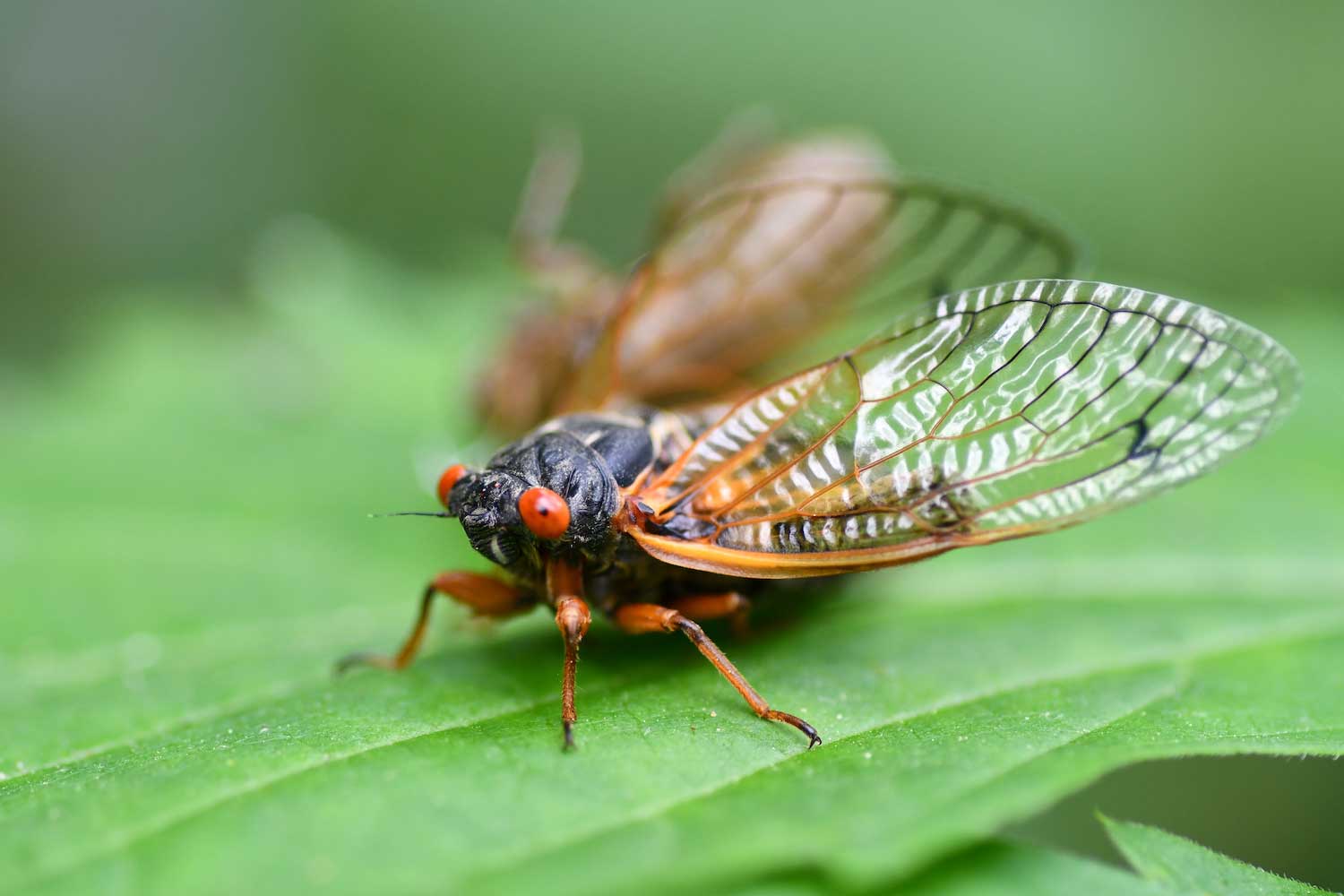What's the difference?: cicada vs. locust

You most definitely know a cicada when you hear one, and you might even know one when you see one, but do you know the difference between a cicada and a locust?
We often call cicadas locusts, but they are not one and the same. They aren't even closely related. Only one of these insects — the cicada — lives in the United States. This hasn't always been the case, however. At one time, the Rocky Mountain locust could be found across parts of America, but it was declared extinct in the early 1900s, according to Live Science.
Both cicadas and locusts can be viewed unfavorably, but for very different reasons. Cicadas are actually beneficial insects that only impact our enjoyment of the outdoors with their sometimes deafening racket, while locusts can and have had highly destructive effects on crops for centuries, dating back as far as ancient Egypt, National Geographic reports.
Locusts are a kind of grasshopper, and they look like other grasshoppers we see, but unlike other grasshoppers, locusts sometimes form enormous swarms that can devour plants, often entire fields of crops, according to National Geographic. The locusts are normally solitary, so when swarms develop it can have a devastating impact on the agricultural industry in the area where it occurs. Only 22 of the thousands of grasshopper species that exist in the world are locusts.
Swarms of locusts result from a specific weather pattern. When prolonged dry weather occurs, the locusts must congregate in areas where they can find vegetation. This causes the insects to release serotonin, which affects their behavior and appetite. Then, when rain breaks the dry spell and green vegetation is more plentiful, the locusts switch from their normal solitary lifestyle to what is called a gregarious phase.
During the gregarious phase, the locusts reproduce more rapidly and become even more crowded into particular spaces. They will also sometimes change their color and even their body shape, and their brains get bigger, National Geographic reports.
Swarms can include millions of locusts, and they can consume more than 300 million pounds of vegetation in a single day, according to National Geographic. They travel as they consume the vegetation in their wake, and they can sometimes travel great distances, even crossing oceans. In 1988, a swarm of locusts traveled 3,100 miles from West Africa to the Caribbean in 10 days.
We don't experience locust swarms in the United States because we no longer have locusts in North America, but they do occur in many other parts of the world. They are most destructive in certain regions of Africa, where the loss of agricultural crops can cause starvation and famine, National Geographic reports.
We are fortunate not to experience the devastating effects of locusts in the United States, but we do experience the presence of cicadas. Here in Illinois, we have two different kinds of cicadas, dog-day, or annual, cicadas and periodical cicadas.
Periodical cicadas are the ones that draw headlines when they emerge en masse from underground every 17 years, or 13 years in southern Illinois and other parts of the United States, according to the University of Illinois Extension. Dog-day cicadas also have multi-year life cycles, but they can vary from two to eight years depending on which species. Because their life cycles vary, we experience the emergence of dog-day cicadas each summer to varying degrees, usually between July and September.
There are more than 3,000 species of cicadas in all, and both dog-day and periodical cicadas make the loud buzzing sound we associate with these insects. Much like crickets and other insects, the purpose of the sound is to attract a mate, according to National Geographic. Only the males produce the sound, which they do by vibrating membranes on their abdomens. The sound varies by species, although humans are not able to discern the difference in the sounds.
Prior to their emergence, cicadas spend nearly all their lives underground. Eggs are laid in tree limbs, National Geographic reports. When the nymphs hatch, they feed on fluids from the tree then fall to the ground and burrow into the earth, where they will remain until they emerge two to 17 years later. While underground, they feed on tree roots.
Large populations of cicadas can sometimes cause damage to young trees, but they are not considered destructive, National Geographic reports. They serve several beneficial purposes in the ecosystem. They are a food source for many other animals, and the cicada nymphs that live underground help aerate the soil.

